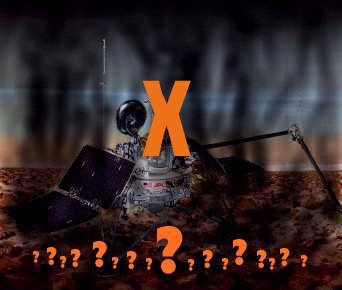


Mars Polar Lander Lost - Questions Remain








The Mars Polar Lander (MPL), sub-mission name, Deep Space 2, was launched from Cape Canaveral on January 3, 1999, with a dual mission operation, the primary goal of which was to test technology, and on the science side, to gain insight into how the Martian climate has evolved and determine the location of water resources.Its 470 million-mile journey concluded on December 3, 1999, when five minutes before it began its landing sequence, the lander first deployed two probes, named Amundsen and Scott, in honor of the first explorers to reach the South Pole of Earth. They entered the atmosphere without braking, their aero shells protecting them from heat and then shattering upon impact with the south polar surface at 644 kph (400 mph), leaving the probes' forward sections to penetrate several feet into the polar surface, with the aft sections remaining on the surface. This is what was supposed to happen. They were never heard from, and their batteries are now dead.
The Polar Lander's landing (crashing) site, believed to be at about 76.1 S latitude, 195.3 W longitude, is described as being in "a strip of gentle, rolling plains, with slopes no steeper than ten degrees and no cliffs or jagged peaks," but either the terrain or the entry and descent dangers were more than the Lander could handle. The spacecraft entered the Martian atmosphere traveling at 6.9 kilometers per second (15,400 miles per hour), and absorbed more than 12 G's dynamic pressure while the heat shield temperature soared to 1,650 C (3,000 degrees F). Engineers were counting on the extra strength built into the spacecraft to overcome possible problems from the unknown factors of the Martian atmosphere and the landing site topography, but those measures were not sufficient.
The last, probable chance for contact came and went early Tuesday morning, December 7, when the Global Surveyor was used to relay any signal coming from the Lander. There was only silence, and engineers conceded for the first time that the Lander is lost. Now, a review board will be formed and NASA will have to settle for the knowledge gained through making mistakes. The probable cause of the loss of the Polar Lander will be damage on entry and landing phase, but the questions will probably go unanswered indefinitly.
If the Polar Lander had survived with no malfunctions, it would have operated until its battery ran down, in about 3.5 months, after the landing site enters the Martian winter and its solar panels would have no longer been able to develop sufficient energy from the sun. JPL did, for several weeks, continue to listen, and to hope against hope. But the Lander now joins the Polar Orbiter as the only entries on the mission list for NASA's failed 1999 Mars-exploration budget of $330 million. But, in a risky and difficult business, it is only fair to remember that NASA scored stunning successes with the Pathfinder and the Mars Global Surveyor, and the indirectly Mars-related Deep Space 1; so, on the distant, hostile Mars frontier, JPL is batting at least 500, and with learning and questioning never ending, NASA is already looking forward to the next millennium of exploration and discovery.
